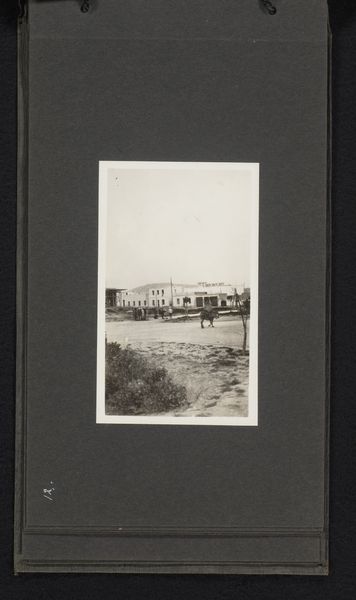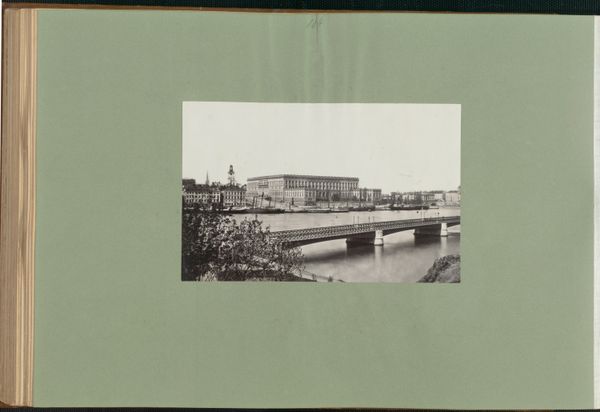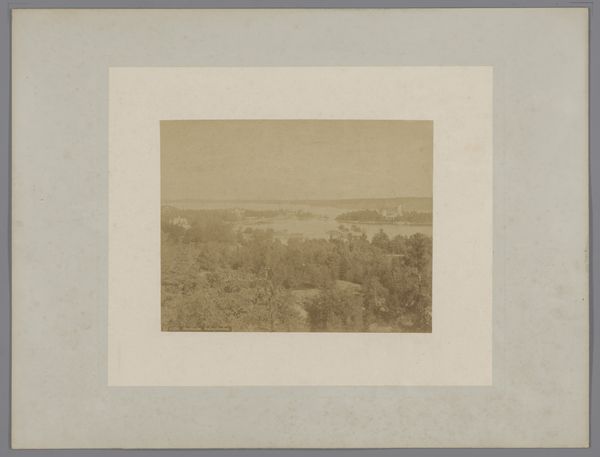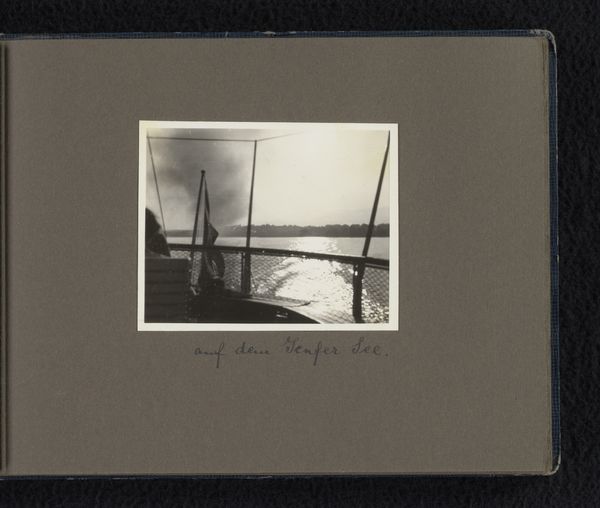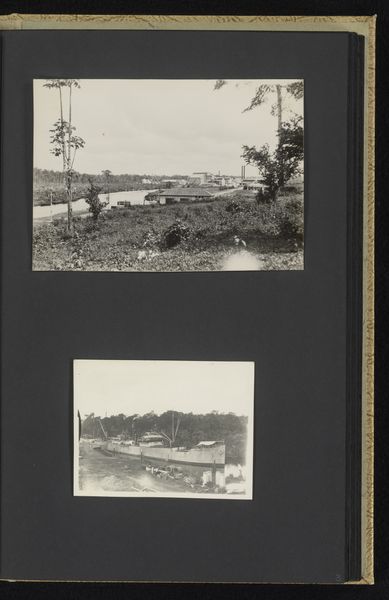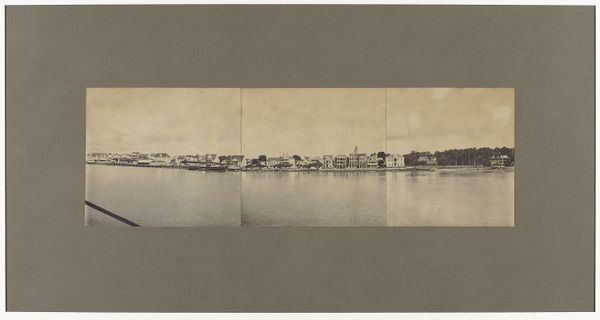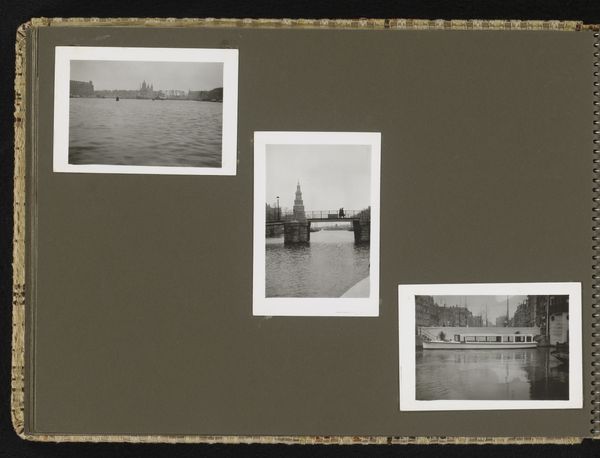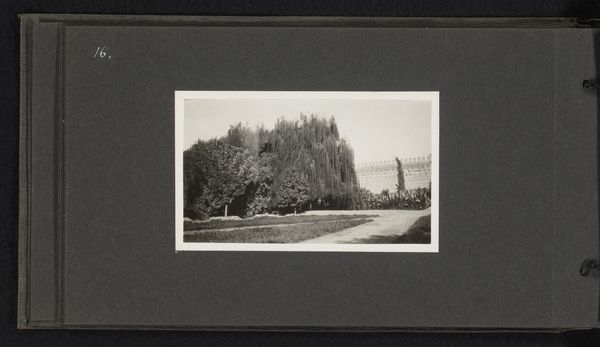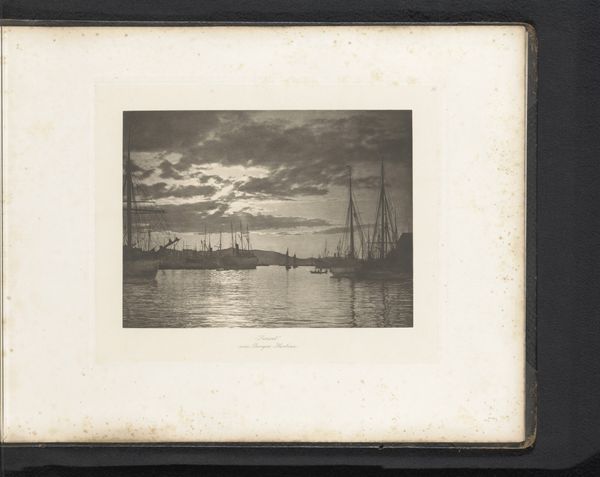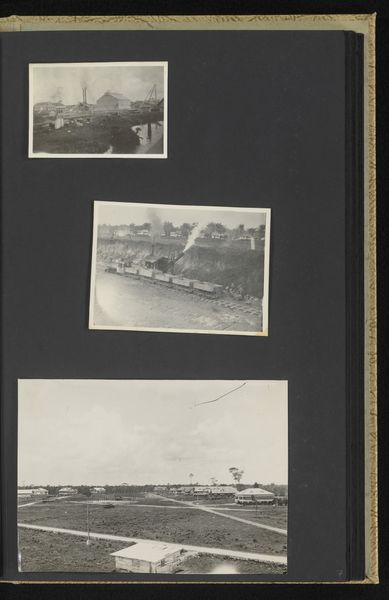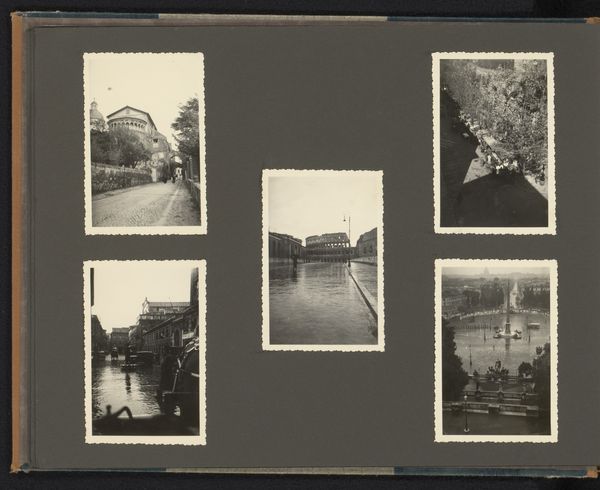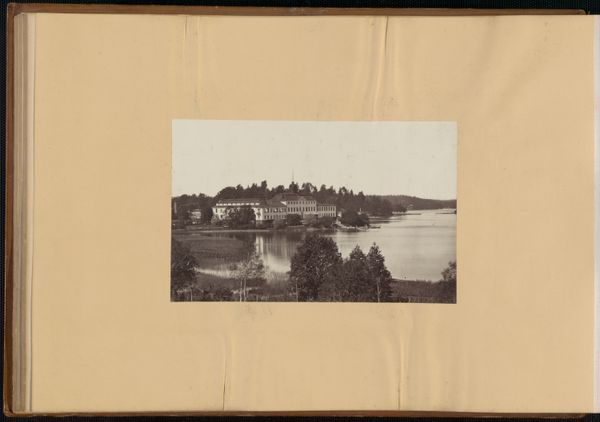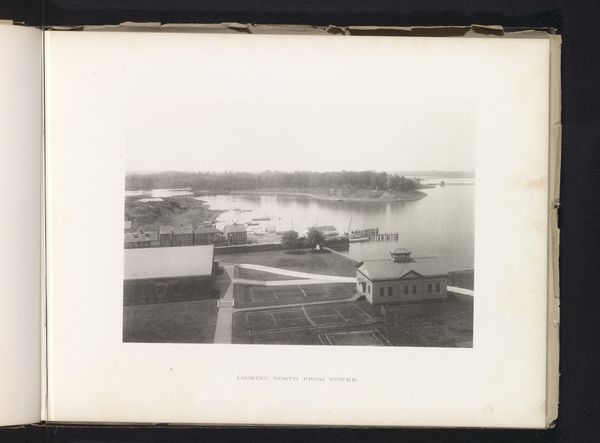
photography
#
pictorialism
#
landscape
#
photography
Dimensions: height 81 mm, width 139 mm, height 125 mm, width 210 mm
Copyright: Rijks Museum: Open Domain
Curator: This is a photograph titled "Waterreservoir in de tuinen van Aguedal, Marrakech" by A.G.A. van Eelde, likely taken around 1927. It falls within the Pictorialism style. Editor: My first impression is one of stillness. The water is like glass, and the monochrome palette gives it a timeless quality, almost dreamlike. It is very calm. Curator: Exactly. Pictorialism, especially at that time, aimed to elevate photography to the status of fine art through carefully controlled techniques and printing processes. Think soft focus, painterly effects. The artistic intent becomes paramount. Editor: Which immediately raises the question: what labor went into producing this specific print? Was it Van Eelde themselves? Which tools or techniques were most important to achieving that effect? The image's content directs us away from Marrakech and the reservoir, towards the physical making, production, and manipulation in the darkroom. Curator: Yes, and considering Van Eelde’s body of work, the landscape subject matter also connects this work to the larger European tradition of landscape painting and photography, and their aestheticizing impulse. Editor: Thinking about its public reception in the 1920s, a Western audience might have viewed this through a colonial lens, romanticizing a North African scene, which removes the photo further from daily life in Marrakech and places it closer to other pictorial landscapes. Curator: Certainly. The very act of photographing these gardens implies a specific power dynamic. But thinking about the materiality of water, especially in such a dry climate, makes the image much more complex. A reservoir like this one served as a vital source of water, infrastructure that served the city itself. It challenges our simplistic view of gardens, in general. Editor: Yes, I can almost hear the water… that smooth surface betrays nothing. Curator: It is a photo that makes you wonder about both the visible and the unseen forces shaping the scene before us.
Comments
No comments
Be the first to comment and join the conversation on the ultimate creative platform.
